| Laevicardium crassum (Gmelin, 1791) |
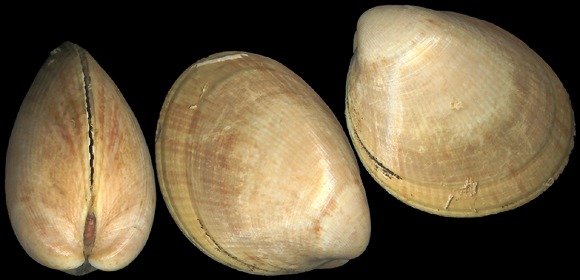 |
Norway to Cabo Verde, Azores to Mediterranean.
Burrowed in sand, shell grit, mud or gravel, from subtidal grounds to upper slope. Filter feeder. Larger in Atlantic.
Original taxon: Cardium crassum.
Synonyms: europeum, norvegicum.
Calambrone beach, Livorno, Toscana, W. Italy. 30mm. |
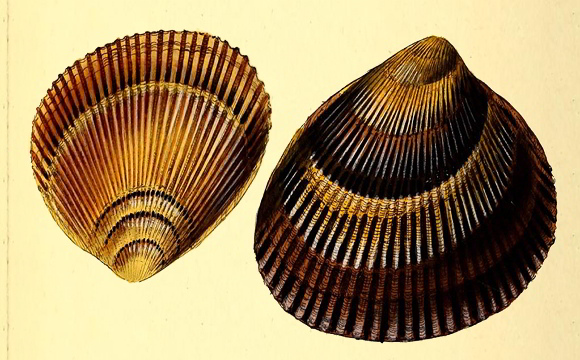 |
The species, under the wrong name Cardium laevigatum (which is a synonym of Fulvia laevigata from Philippines), in E. Donovan: The natural history of British shells, vol. II, London 1800, plate LIV.
« We have observed, that this species is in general discoloured, and deeply tinged with brown or yellow; when fine it is whitish, sleek, and covered with an epidermis. » |
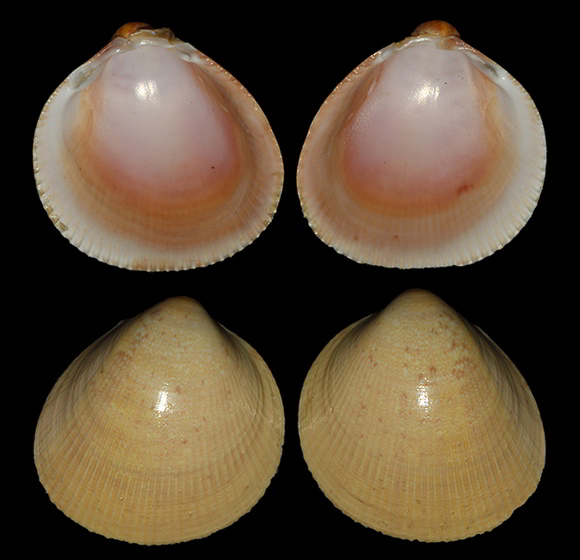 |
| Port-Leucate, Occitania, S. France. 20mm. Original pictures provided by A. Bertrand (FR) – (CC BY-NC-SA). The species differs from the true Fulvia laevigata (Linnaeus, 1758) by its much more marked radials. |
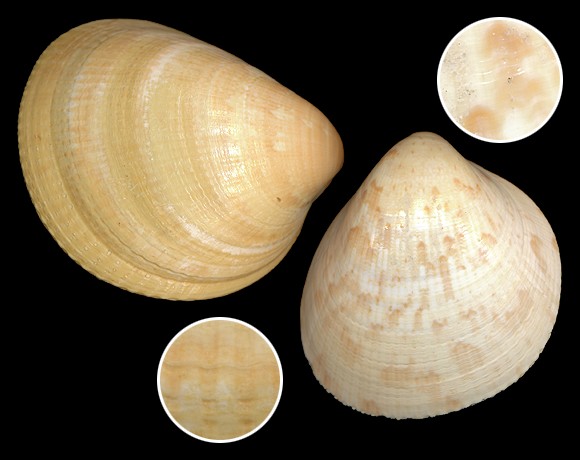 |
Many named variants: gibba, mediterranea, senegalensis…
80-110m deep, on mud, off Llançà, Girona, Catalunya, NE. Spain. 39-45mm. |
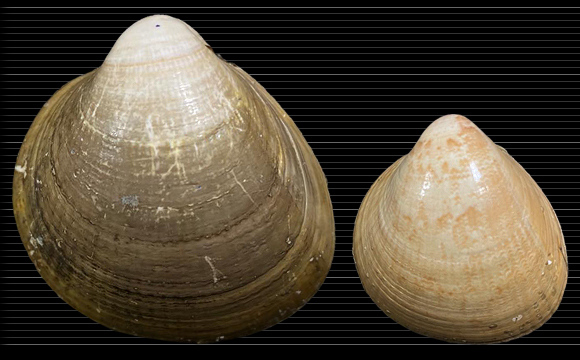 |
| Two specimens collected at 13m deep, Ensenada de los Berengueles, Punta de la Mona, east of La Herradura, Granada, Andalucia, S. Spain. 34-49mm. Original pictures provided by I. Mulero (ES) – (CC BY-NC-SA). |
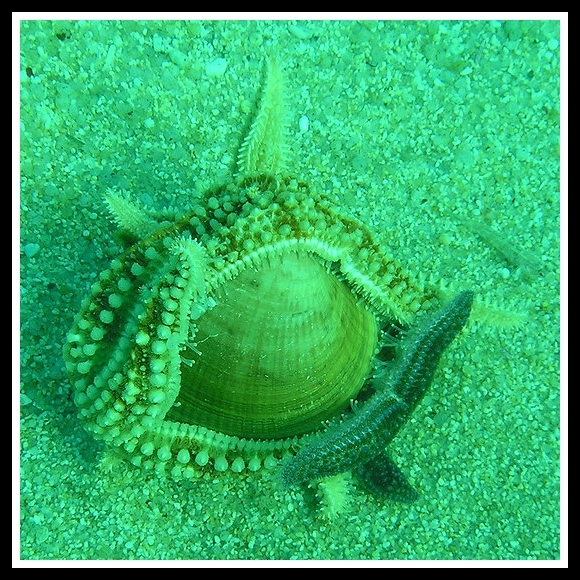 |
| Specimen attacked by two Sea Stars, infralittoral sands off Praia de Tulla, Sar, southwestern side of the Ria de Pontevedra, Galicia, NW. Spain. Original picture provided by G. Mucientes Sandoval for iNaturalist – (CC BY-NC-SA). |
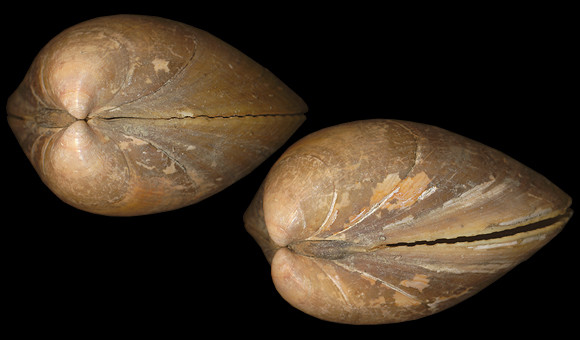 |
Atlantic specimens.
Dredged at 10-15m deep on oysters banks, Quiberon bay, S. Brittany, NW. France. 55mm. |
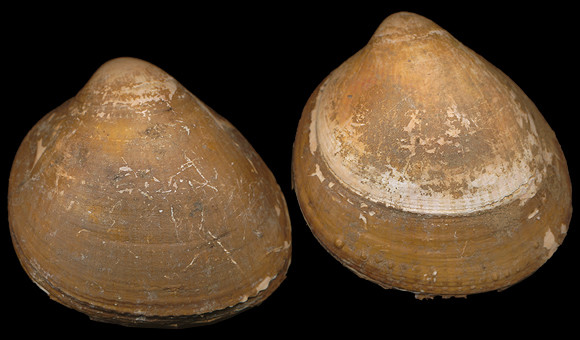 |
| On muddy subtidal bottoms, north of Baden, gulf of Morbihan, S. Brittany. 50-50mm. |
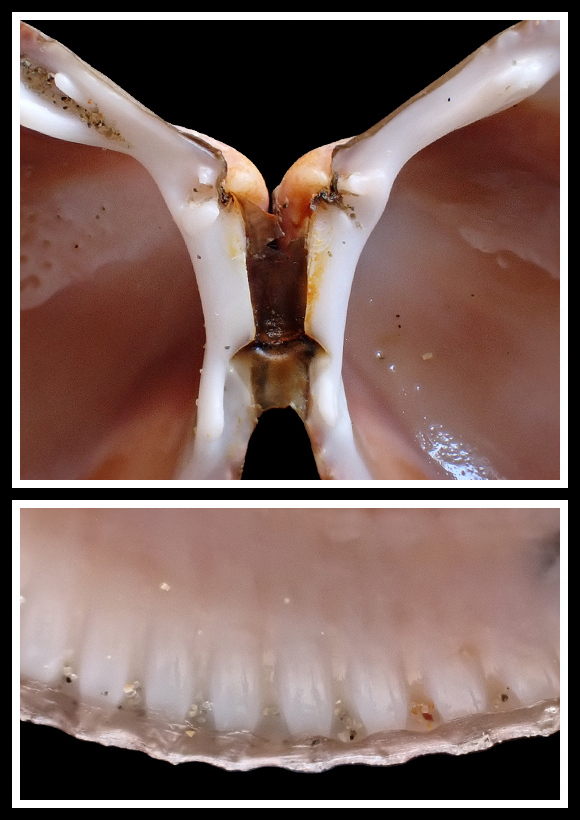 |
| Details of the hinge with its conspicuous laterals, and of the margin, which is always slightly less coloured that the inside. |
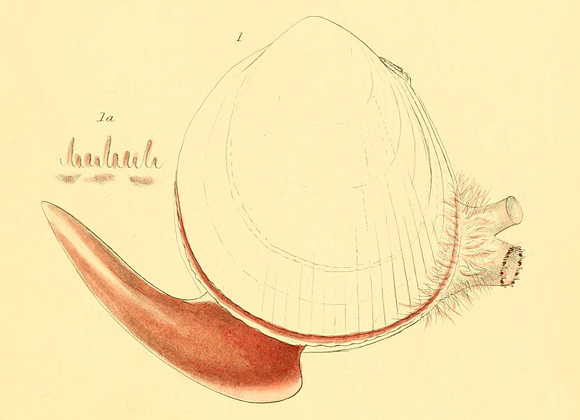 |
| Cardium norvegicum in Forbes & Hanley: British Mollusca, vol. I, London 1853, via BHL. |
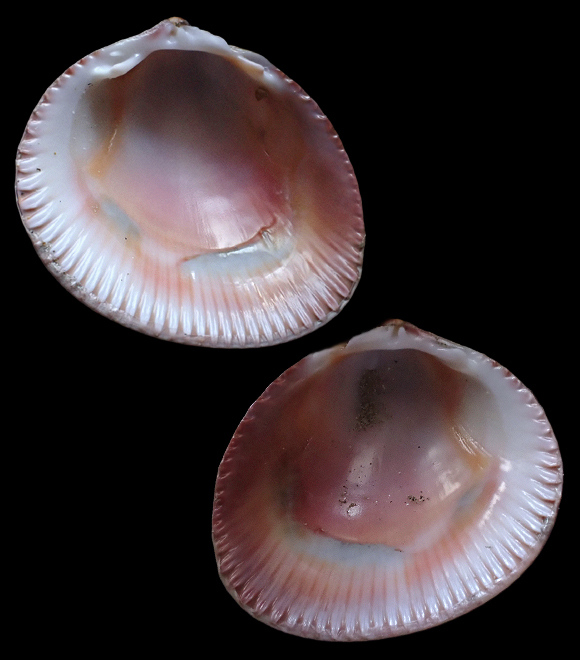 |
Specimens from English Channel.
Saint-Quay-Portrieux, N. Brittany, NW. France. 31mm. |
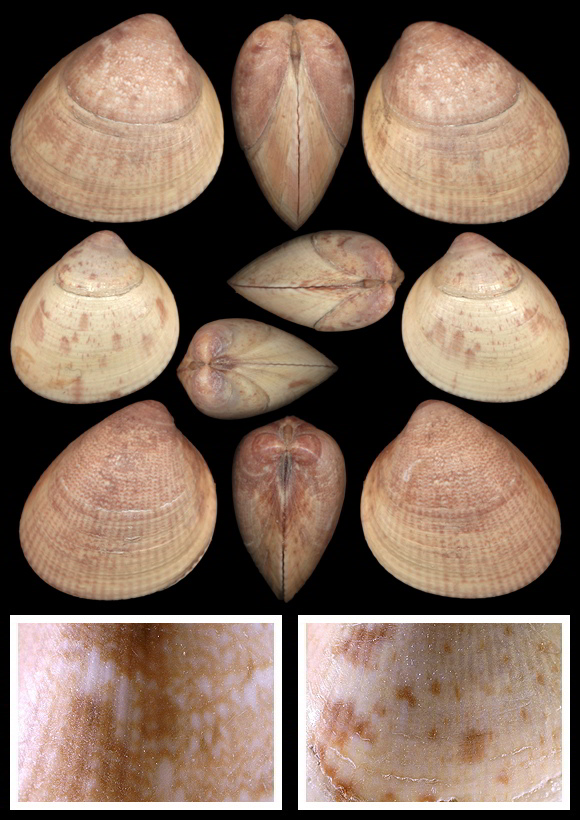 |
| Extreme low tide, Plage des Rosaires, Plérin, W. of Saint-Brieuc, N. Brittany. 22-27mm. |
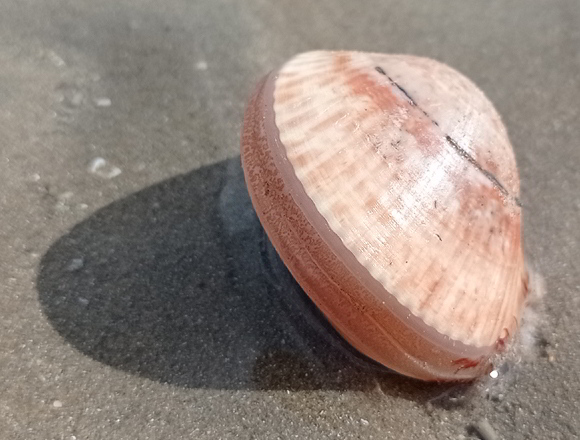 |
| Same spot. |
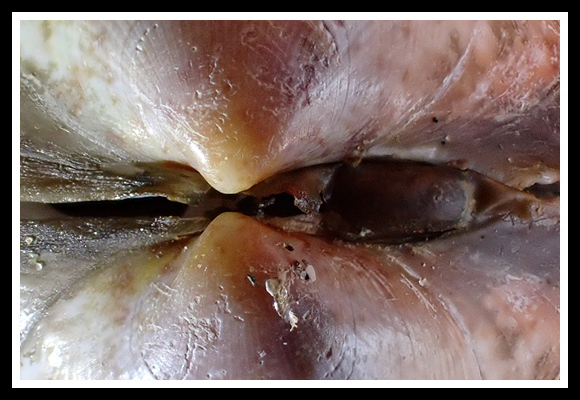 |
| The beaks are practically orthogyrate. |
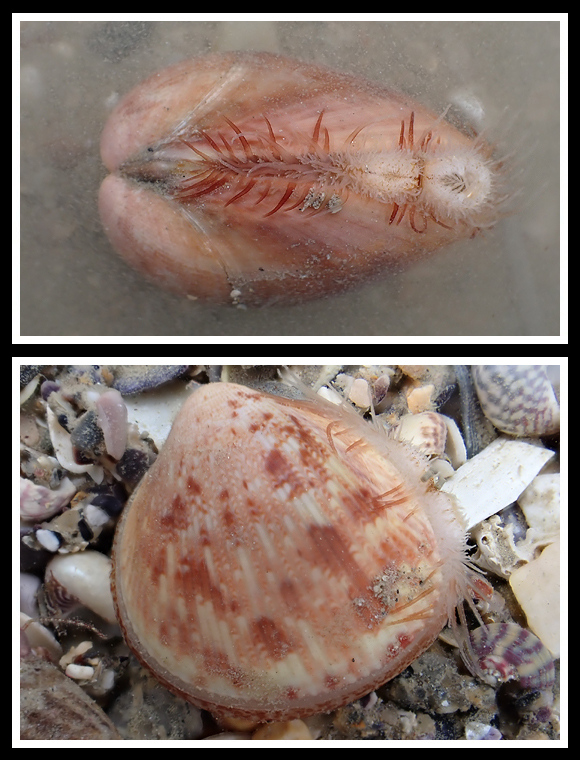 |
| Subadults. In ripple marks at extreme low tide, on the mild slope between La Nellière and La Colombière islets, Pointe du Chevet, Saint-Jacut-de-la-Mer, NE. Brittany. |
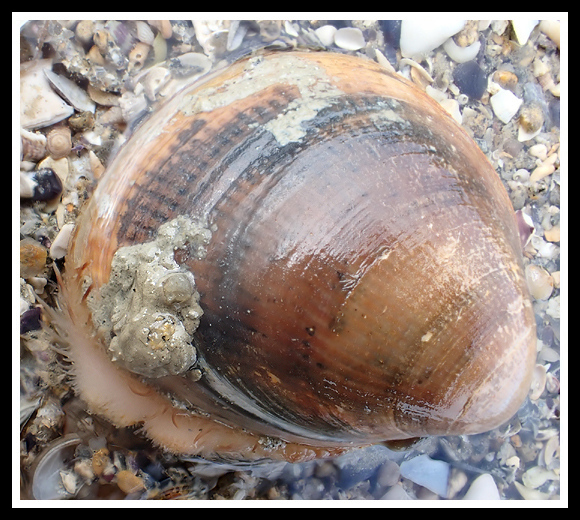 |
| A large adult from the same spot. |
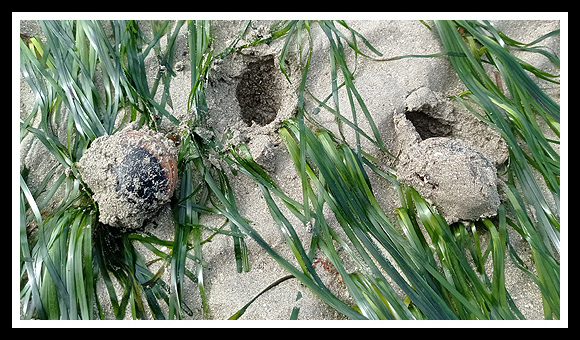 |
| These specimens, which had never experienced the trauma of a tide, dislodged themselves in order to find the sea again. Same slope, in a Zostera marina field. |
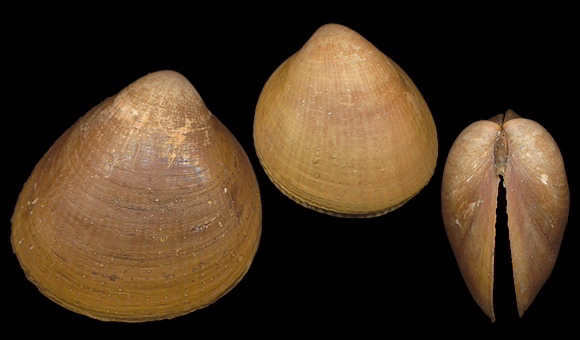 |
| Extreme low tide on sand bank, Les Noires, Saint-Malo, N. Brittany. 36-50mm. |
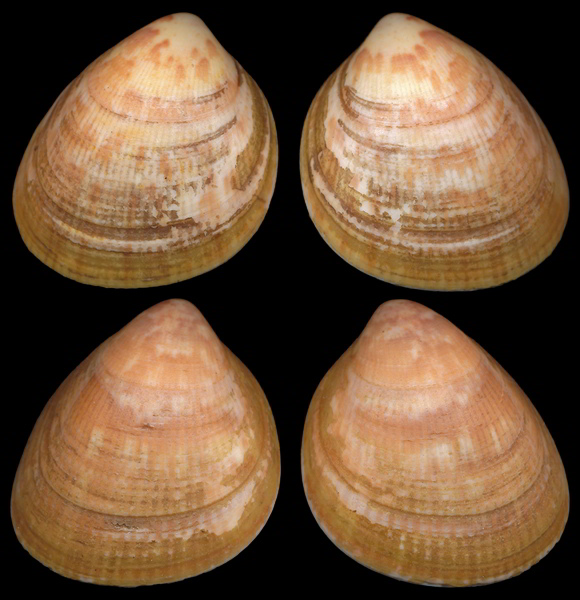 |
| Specimens from Irish Sea: on sand near high tide mark, Llanbedrog, Llyn Peninsula, Wales. 44-46mm. |
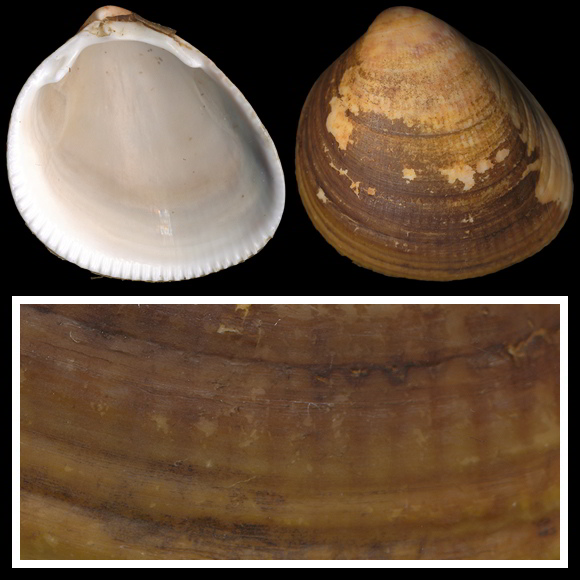 |
| Same spot. 50mm. Periostracum smooth. |



















